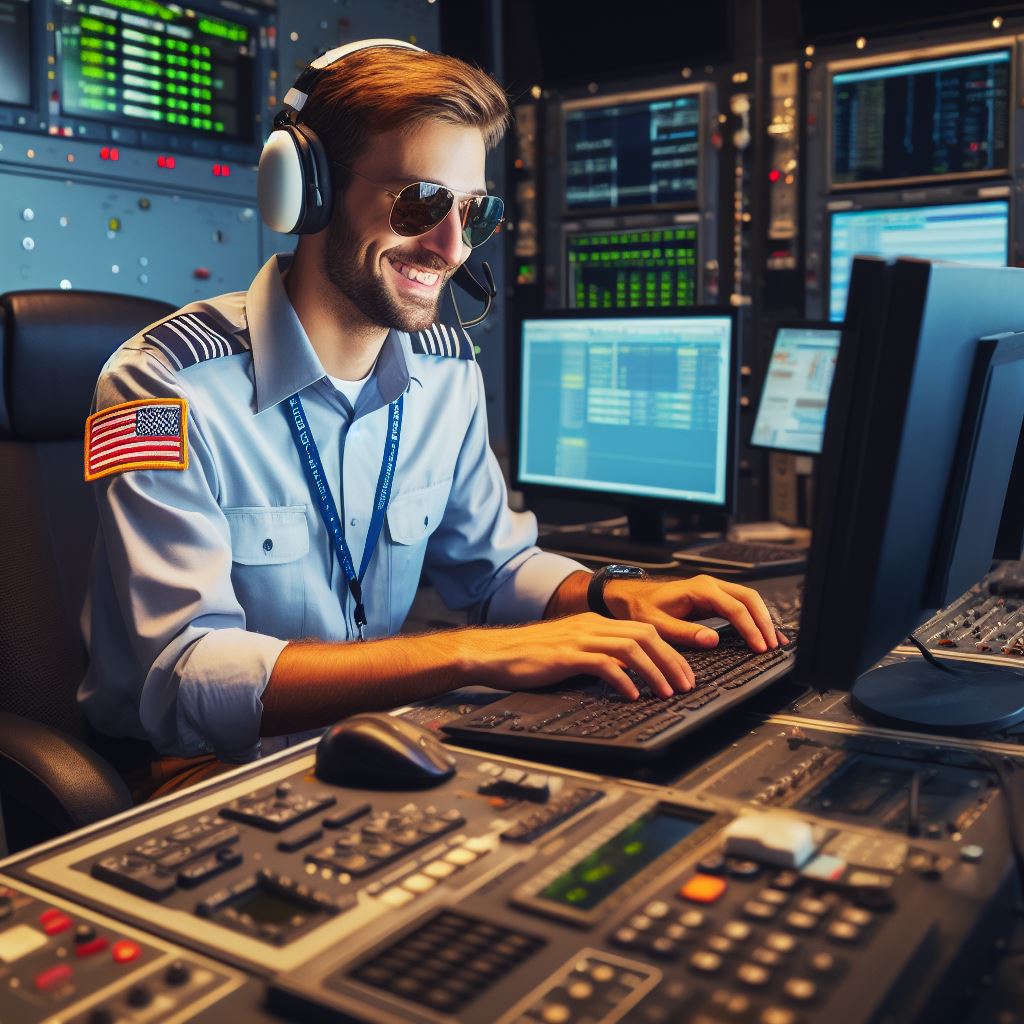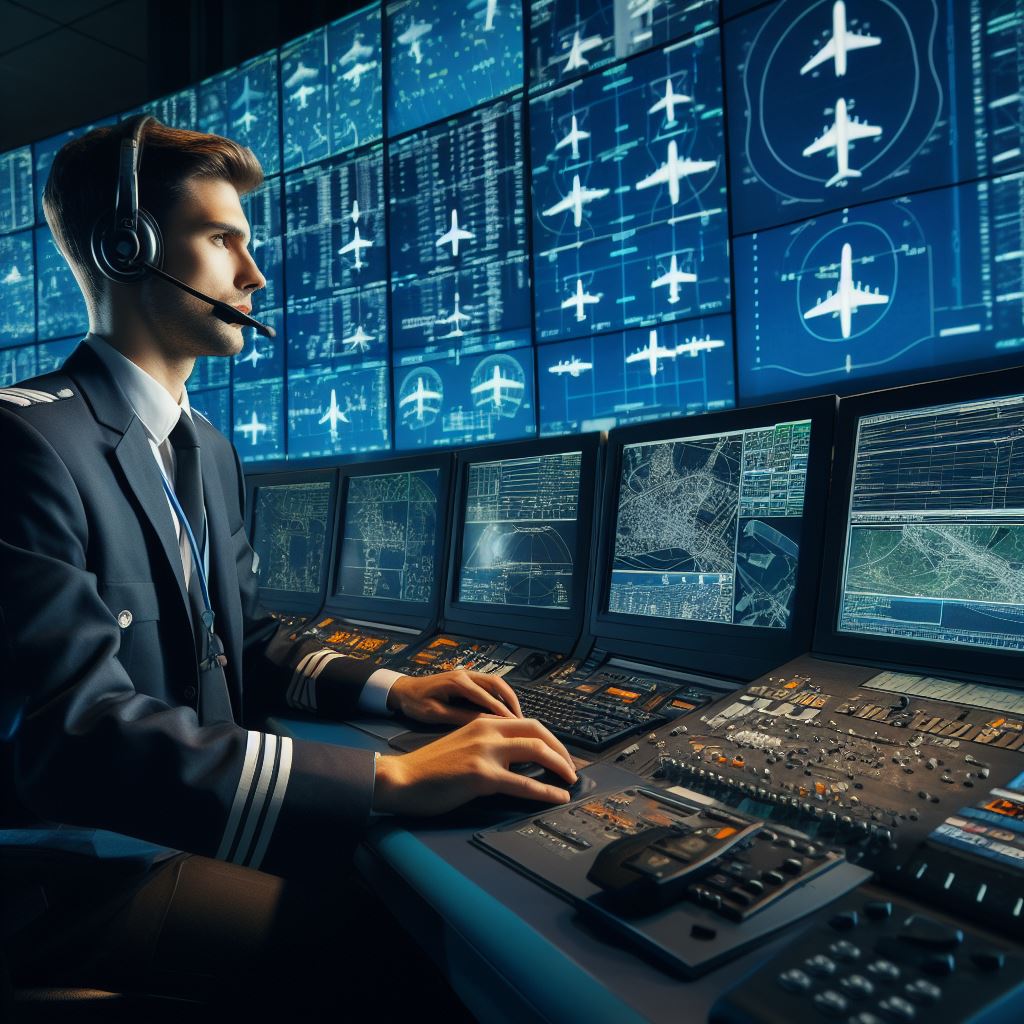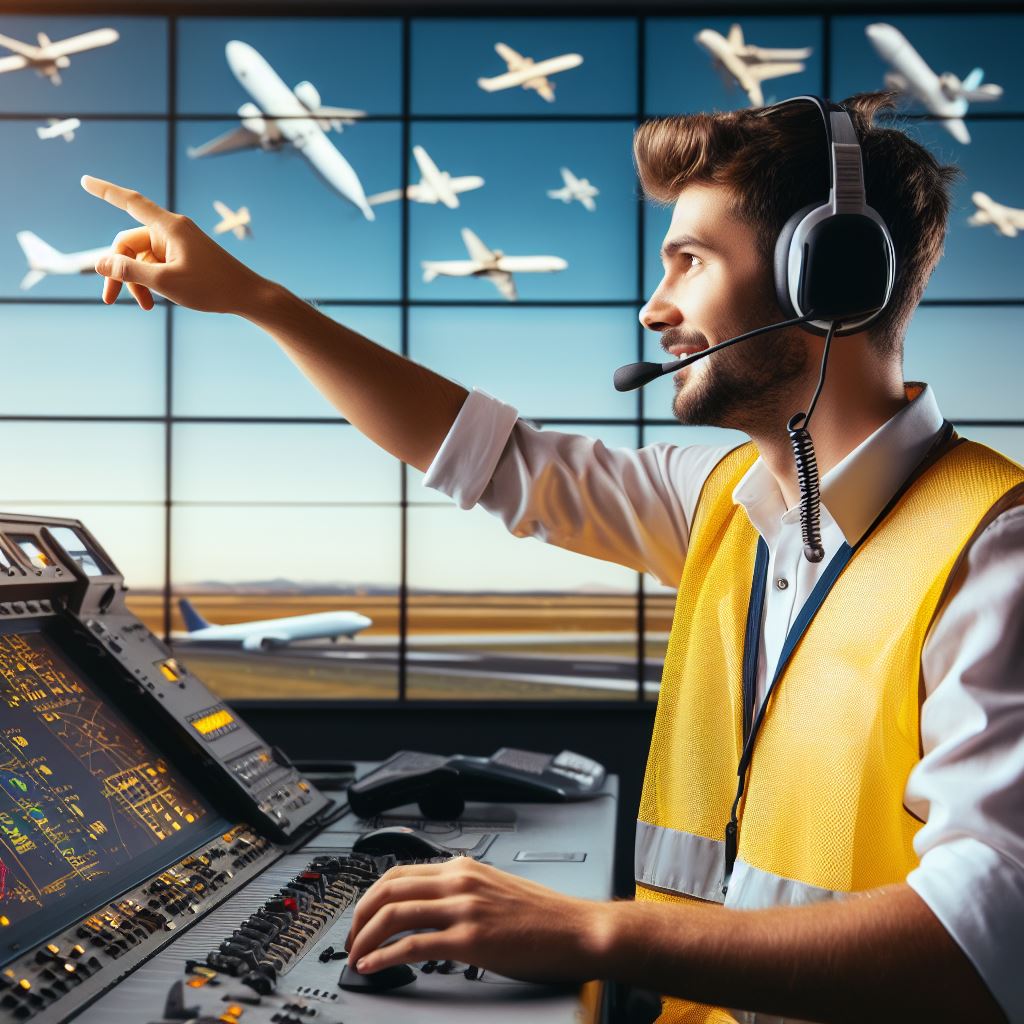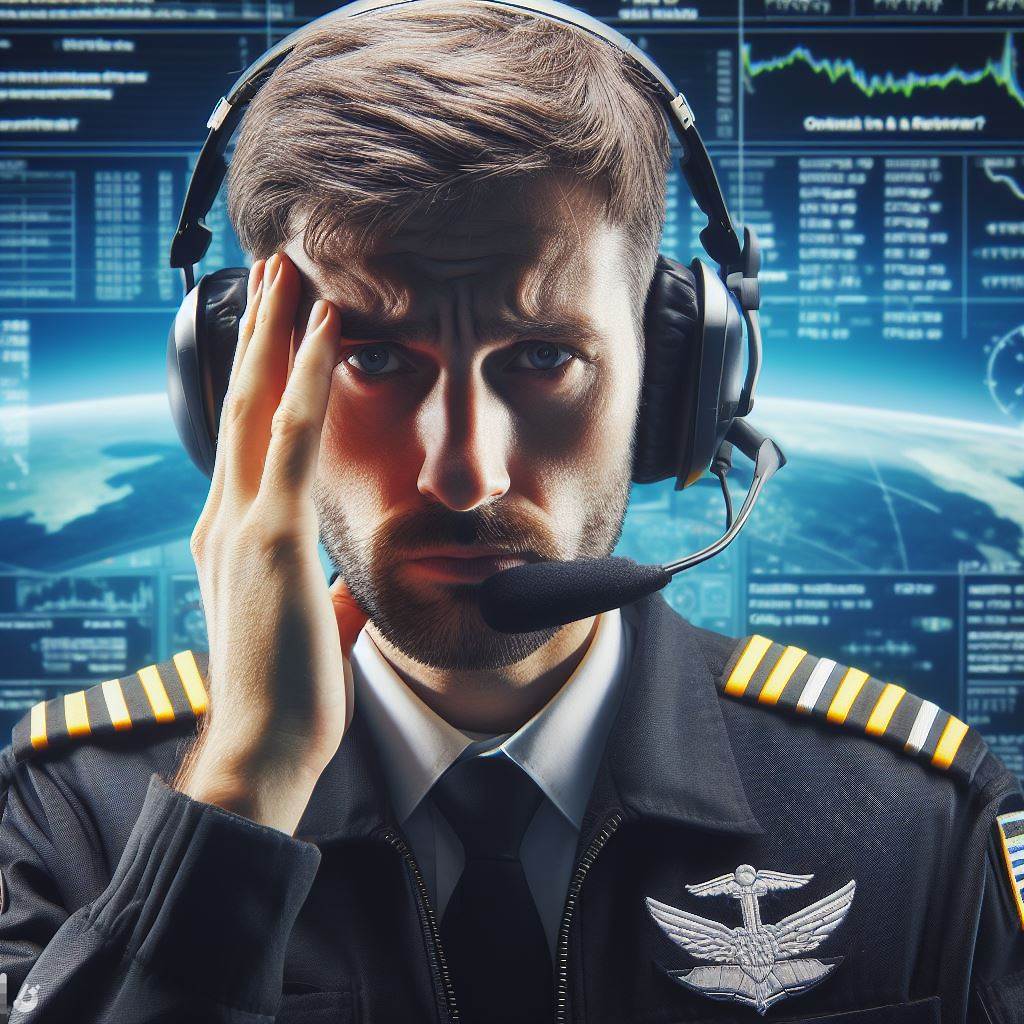Introduction
The relationship between Air Traffic Controllers (ATCs), pilots, and airlines in the U.S. is crucial for the safe and efficient operation of the aviation industry.
In the U.S., air traffic controllers orchestrate safe skies, guiding pilots through intricate airspace.
Pilots collaborate closely, adhering to controller instructions. Airlines rely on this synergy for efficient and secure air travel.
Regular communication and coordination among these three entities ensure the seamless functioning of the aviation ecosystem, emphasizing teamwork and precision.
The interdependence between air traffic controllers, pilots, and airlines underscores the importance of effective communication and collaboration in maintaining the safety and efficiency of air travel in the United States.
Importance of understanding the relationship between ATCs, pilots, and airlines in the U.S.
Understanding the dynamic interaction between ATCs, pilots, and airlines is essential as it directly impacts the safety, efficiency, and smooth functioning of air travel in the United States.
Air Traffic Controllers (ATCs)
Roles and responsibilities of ATCs
- ATCs are responsible for managing and directing the flow of air traffic.
- They communicate with pilots to provide instructions and maintain safe separation between aircraft.
- ATCs monitor and control airspace to ensure the safe and efficient movement of aircraft.
- They are responsible for issuing clearances, such as takeoff and landing instructions, to pilots.
- ATCs also provide weather updates, runway status, and other essential information to pilots.
- They play a crucial role in preventing accidents and ensuring the overall safety of air travel.
- ATCs need to stay focused and make quick decisions in high-pressure situations.
- They must possess excellent communication and problem-solving skills.
- ATCs are responsible for coordinating with other ATCs and aviation professionals to ensure smooth operations.
- They need to stay updated with the latest aviation technology and regulations.
Qualifications and training required to become an ATC
- Becoming an ATC requires a high level of education and training.
- Applicants must have a minimum of a high school diploma or equivalent.
- They need to pass the Federal Aviation Administration’s (FAA) pre-employment test.
- ATCs must undergo rigorous medical and psychological evaluations to ensure they are fit for the job.
- Candidates must successfully complete an ATC training program at the FAA Academy.
- Training includes classroom instruction, simulations, and on-the-job training.
- ATCs also need to pass the Air Traffic Skills Assessment (ATSA) exam before they can be hired.
- Continuing education and recurrent training are essential for ATCs to maintain their skills.
- ATCs also need to obtain and maintain certification from the FAA.
- They must meet specific age requirements and be able to speak English fluently.
ATC’s role in ensuring safe and efficient air traffic management
- ATCs play a crucial role in maintaining safe and efficient air traffic management.
- They ensure proper separation between aircraft to prevent collisions.
- ATCs manage airspace congestion, especially in busy airports and high-traffic areas.
- They optimize routes and adjust air traffic flow to minimize delays and improve efficiency.
- ATCs coordinate with pilots, airlines, and other aviation stakeholders to resolve disruptions or emergencies.
- They use advanced technology, such as radar systems, to monitor and track aircraft.
- ATCs provide guidance during bad weather conditions, ensuring safe operations in challenging circumstances.
- They contribute to the overall safety of the national airspace system and the traveling public.
- ATCs need to stay vigilant and make critical decisions quickly to ensure the smooth operation of air traffic.
- Their expertise and dedication are crucial in preventing accidents and maintaining efficient air travel.
The Air Traffic Controllers (ATCs) have essential roles and responsibilities in ensuring the safe and efficient management of air traffic.
They undergo rigorous training and must meet specific qualifications to become ATCs.
Their expertise in communication, decision-making, and coordination with other aviation professionals contributes to the overall safety and efficiency of air travel.
ATCs play a vital role in preventing accidents and maintaining the smooth operation of the national airspace system.
Pilots
Roles and responsibilities of pilots
Pilots play a crucial role in the aviation industry and are responsible for the safe operation of an aircraft.
They are trained professionals who ensure the safety of passengers and cargo during flights.
Different types of pilots (commercial, private, military, etc.)
There are various types of pilots, each with different roles and requirements. Commercial pilots are employed by airlines to transport passengers and cargo.
Private pilots fly for personal and recreational purposes. Military pilots serve in the armed forces and are trained for combat missions.
Training and certifications needed to become a pilot
Becoming a pilot requires rigorous training and specific certifications.
Aspiring pilots must undergo flight training from certified flight schools and accumulate a specific number of flight hours to qualify for different levels of licenses.
Such as private pilot license (PPL) or Airline Transport Pilot (ATP) license.
Importance of effective communication between ATCs and pilots
Effective communication between Air Traffic Controllers (ATCs) and pilots is vital for a safe and efficient aviation system.
ATCs provide instructions to pilots regarding routes, altitudes, and traffic separation, while pilots relay vital information to ATCs, such as their aircraft’s position, intentions, and any emergency situations.
Transform Your Career Today
Unlock a personalized career strategy that drives real results. Get tailored advice and a roadmap designed just for you.
Start NowClear and concise communication ensures coordinated and safe operations.
Read: The Evolution of Pilot Training Programs in the US
Airlines
Overview of the airline industry in the U.S.
- The airline industry in the U.S. plays a vital role in the transportation of people and goods.
- It is a highly competitive market with numerous airlines serving both domestic and international routes.
- Major airlines, such as Delta, American, United, and Southwest, dominate the industry.
- Regional and low-cost carriers also contribute to the diversity of the U.S. airline industry.
Roles and responsibilities of airlines
- Airlines have the primary responsibility of ensuring the safe transportation of passengers and cargo.
- They are responsible for maintaining their fleet of aircraft in accordance with safety regulations.
- Airlines also provide customer service, including reservations, check-in, and onboard amenities.
- They play a vital role in promoting tourism and economic growth by connecting cities and countries.
Airline operations and their relationship with ATCs and pilots
- Airline operations involve a complex coordination between airlines, air traffic controllers (ATCs), and pilots.
- Before a flight, airlines must file flight plans with ATC, detailing the intended route and schedule.
- ATCs then work closely with airlines to manage the flow of air traffic, ensuring safe and efficient operations.
- Pilots rely on ATC instructions and communications to navigate through airspace and safely land at their destination.
- Collaborative efforts between airlines, ATCs, and pilots are crucial for a smooth and coordinated air transportation system.
Safety regulations and standards imposed on airlines by the FAA
- The Federal Aviation Administration (FAA) is responsible for regulating and overseeing the safety of the airline industry in the U.S.
- The FAA sets rigorous safety standards that all airlines must comply with to ensure the well-being of passengers and crew.
- Airlines undergo regular inspections and audits by the FAA to ensure compliance with safety regulations.
- Safety measures include rigorous pilot training, aircraft maintenance checks, and adherence to safety protocols.
- These regulations and standards are continuously updated to keep up with technological advancements and emerging risks.
In essence, the airline industry in the U.S. is a highly competitive market with various roles and responsibilities for airlines.
They ensure safe transportation, contribute to the economy, and work in close coordination with ATCs and pilots.
The FAA’s safety regulations play a crucial role in maintaining the industry’s high safety standards.
The collaborative efforts of all stakeholders are essential for the successful operation of the U.S. airline industry.
Read: Veteran Pilots Share Their Most Memorable Flights
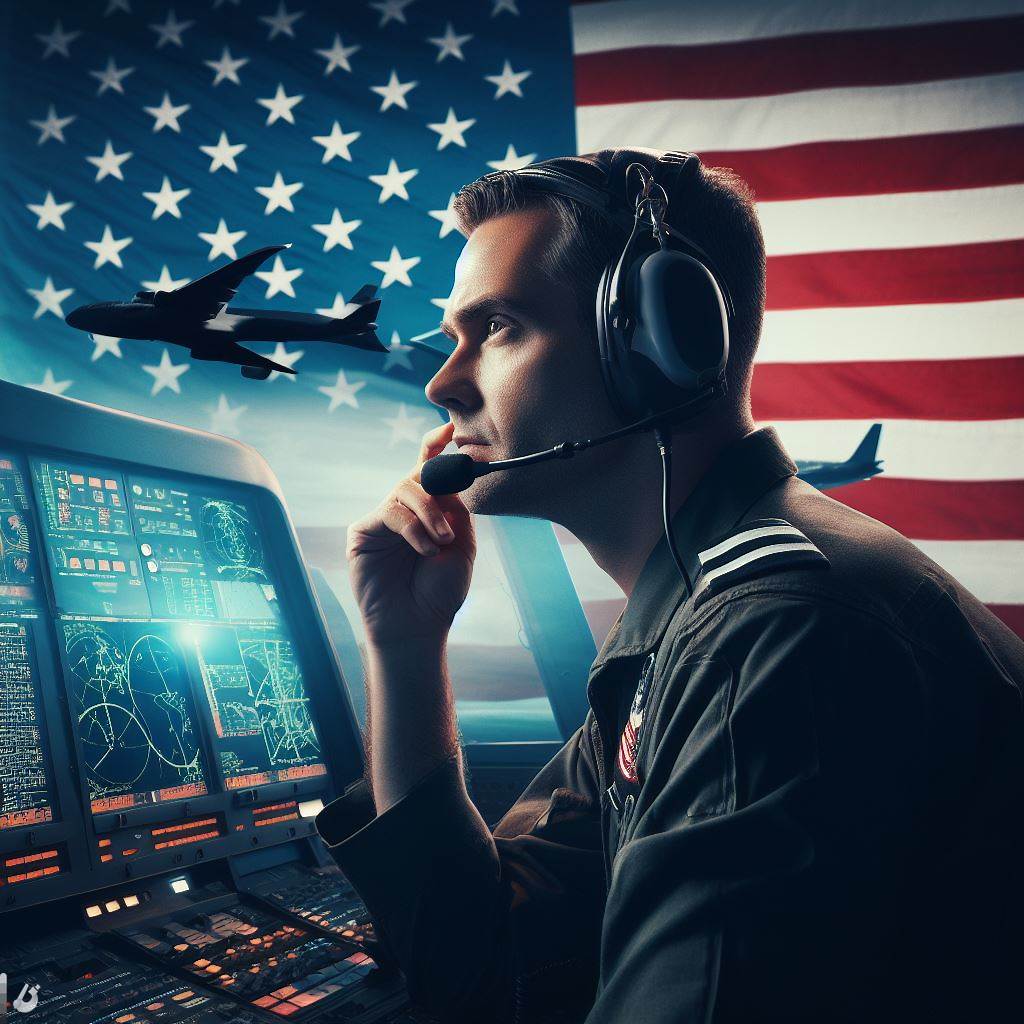
The Relationship between ATCs, Pilots, and Airlines
Importance of collaboration and coordination between these parties
The collaboration and coordination between Air Traffic Controllers (ATCs), pilots, and airlines is crucial.
It ensures the safe and efficient operation of air traffic in the United States.
Effective communication and cooperation between these parties are essential for smooth air travel.
Communication protocols and procedures between ATCs and pilots
ATCs and pilots follow specific communication protocols and procedures to ensure clarity and understanding.
Clear and concise communication is vital to prevent misunderstandings and maintain a high level of safety.
ATCs provide pilots with essential information about weather conditions, traffic congestion, and any potential hazards.
Pilots, in turn, relay critical information to ATCs, such as position updates and requested altitude changes.
How ATCs assist pilots in navigating through airspaces and ensuring safety
ATCs are responsible for managing the flow of air traffic and ensuring aircraft separation.
They guide pilots through designated airspaces, ensuring their safe navigation and avoiding any conflicts.
ATCs monitor aircraft movements, issue clearances, and provide necessary instructions to maintain a safe distance between aircraft.
Their expertise helps pilots make informed decisions to ensure the safety of their passengers and crew.
The role of airlines in supporting and cooperating with ATCs and pilots
Airlines play a vital role in supporting and cooperating with ATCs and pilots to facilitate smooth operations.
They provide flight plans and updates to ATCs, enabling efficient coordination of air traffic.
Transform Your Career Today
Unlock a personalized career strategy that drives real results. Get tailored advice and a roadmap designed just for you.
Start NowAirlines also adhere to ATC instructions and regulations, ensuring the overall safety and efficiency of air travel.
Furthermore, airlines collaborate with ATCs and pilots to address any arising issues promptly.
Essentially, the relationship between ATCs, pilots, and airlines in the U.S. is built on collaboration and cooperation.
Effective communication protocols and procedures enable clear and concise exchanges between ATCs and pilots.
ATCs assist pilots in navigating airspaces and maintaining safety, while airlines support and cooperate with ATCs and pilots.
This interdependence ensures the safe and efficient operation of air traffic in the United States.
Read: The Role & Responsibilities of U.S. Air Traffic Controllers
Challenges and Issues in the Relationship
Congestion and volume of air traffic
- The relationship between ATCs, pilots, and airlines faces numerous challenges and issues.
- One of the primary challenges is the congestion and volume of air traffic in the United States.
- The increasing number of flights has resulted in busy airports and crowded airspaces.
- This congestion puts added pressure on ATCs, pilots, and airlines to ensure safe and efficient operations.
- ATCs must manage the flow of aircraft, coordinating takeoffs, landings, and route assignments.
- Pilots have to navigate through busy airspace while adhering to ATC instructions.
- Airlines also face the challenge of scheduling flights in congested airspaces, leading to delays.
- To address this issue, several initiatives have been implemented, such as the NextGen program.
- NextGen aims to modernize air traffic management, increasing efficiency and reducing congestion.
- However, the full implementation of NextGen and its benefits can take time.
Weather conditions and its impact on flights
- Another significant challenge in the relationship between ATCs, pilots, and airlines is weather conditions.
- Adverse weather, such as thunderstorms, fog, or strong winds, can disrupt flight operations.
- ATCs must assess weather conditions and provide pilots with necessary information and guidance.
- Pilots rely heavily on ATC updates to make critical decisions regarding flight routes and potential diversions.
- Airlines also face the task of accommodating passengers and reorganizing schedules due to weather delays.
- A collaborative effort between ATCs, pilots, and airlines is crucial to ensure safety and minimize disruptions.
- Advanced weather forecast systems and improved communication technologies aid in managing weather-related challenges.
ATC workload and stress management
- The demanding workload of ATCs often leads to stress, which can impact their performance and decision-making abilities.
- ATCs are responsible for maintaining the safe separation of aircraft and managing multiple flights simultaneously.
- They must remain vigilant and focused throughout their shifts, which can last for several hours.
- Highly stressful situations, such as dealing with emergencies or critical airspace congestion, can further escalate pressure.
- Efficient stress management and providing support to ATCs are crucial for maintaining an effective working relationship.
- Regular breaks, proper training, and clear communication channels can help alleviate the workload burden.
Miscommunication and human errors
- Miscommunication and human errors pose significant challenges in the relationship between ATCs, pilots, and airlines.
- A clear and accurate exchange of information between these parties is essential for safe and efficient operations.
- Misunderstandings or misinterpretation of instructions can lead to potentially dangerous situations.
- ATCs must communicate instructions concisely, while pilots need to acknowledge and confirm their understanding.
- Human errors can occur due to factors such as fatigue, distractions, or lack of situational awareness.
- Training programs and standardized procedures aim to minimize these risks and improve communication.
Generally , the relationship between ATCs, pilots, and airlines faces various challenges and issues.
Congestion and volume of air traffic, weather conditions, ATC workload and stress, as well as miscommunication and human errors, all require attention and collaborative efforts to ensure safe and efficient operations.
Initiatives like NextGen, advanced weather forecast systems, and stress management strategies play a vital role in addressing these challenges and promoting a strong working relationship.
Read: Transitioning from a Pilot to a Flight Instructor Role
Conclusion
Recap of the key points
Throughout this blog post, we have explored the relationship between air traffic controllers (ATCs), pilots, and airlines in the United States.
We have learned about their roles and responsibilities in ensuring safe and efficient air travel.
Importance of maintaining a healthy relationship between ATCs, pilots, and airlines
It is crucial to maintain a healthy relationship between ATCs, pilots, and airlines to promote clear communication, collaboration, and mutual understanding.
This relationship is essential for the smooth operation of the aviation industry.
Overall significance of their collaboration in ensuring safe and efficient air travel in the U.S.
The collaboration between ATCs, pilots, and airlines plays a vital role in ensuring safe and efficient air travel in the United States.
Their collective efforts help prevent accidents, manage air traffic congestion, and maintain high standards of aviation safety.
Call-to-action for readers to explore further resources on the topic
To gain a deeper understanding of the relationship between ATCs, pilots, and airlines, we encourage readers to explore further resources, such as research papers, industry publications, and professional organizations.
By delving into these resources, readers can expand their knowledge and contribute to the advancement of aviation safety.
The harmonious relationship between ATCs, pilots, and airlines is crucial for the successful and safe functioning of the U.S. aviation industry.
Transform Your Career Today
Unlock a personalized career strategy that drives real results. Get tailored advice and a roadmap designed just for you.
Start NowTheir collaboration ensures that air travel remains secure, efficient, and enjoyable for passengers and stakeholders alike.
[E-Books for Sale]
The Big Book of 500 High-Paying Jobs in America: Unlock Your Earning Potential
$19.99 • 500 High-Paying Jobs • 330 pages
Explore 500 high-paying jobs in America and learn how to boost your career, earn more, and achieve success!
See All 500 High-Paying Jobs of this E-Book
1001 Professions Without a Degree: High-Paying American Jobs You Can Start Now
$19.99 • 1001 Professions Without a Degree • 174 pages
Discover 1001 high-paying jobs without a degree! Unlock career tips, skills, and success strategies for just $19.99!

